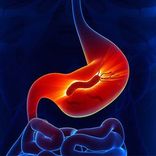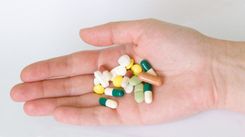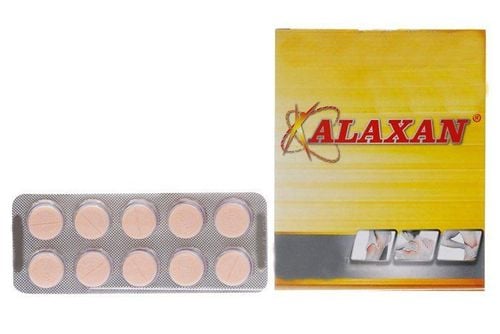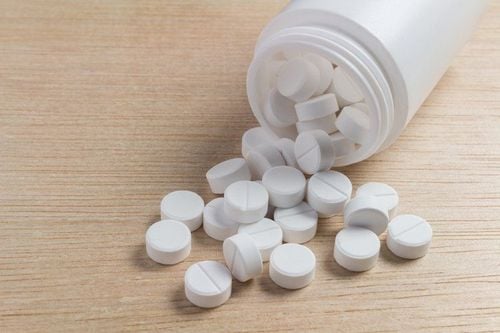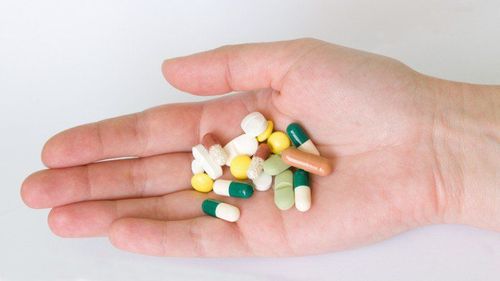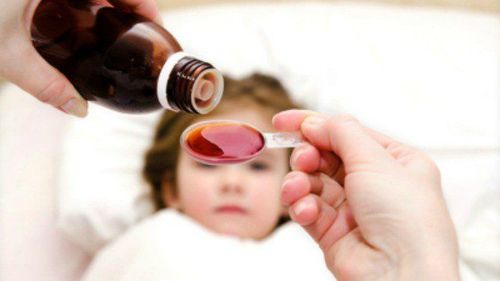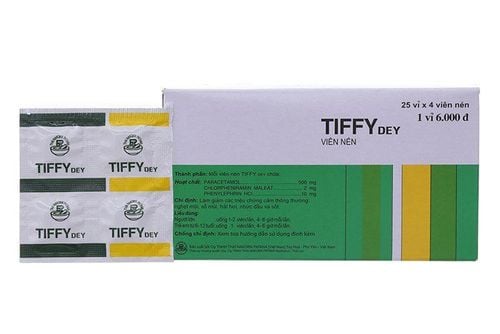Tramadol/Paracetamol is a pain reliever used to treat moderate to severe pain. It is available in tablet form for oral use. This article provides important information about this medication.
1. Effects of Tramadol + Paracetamol
1.1. Indications
Tramadol + Paracetamol consists of two main active ingredients: tramadol and paracetamol (also known as acetaminophen). Tramadol is an opioid pain reliever that acts on the brain to alter the sensation and response to pain. Paracetamol is a widely used medication for pain relief and fever reduction. When combined, Tramadol + Paracetamol is effective in relieving moderate to severe pain.
1.2. Contraindications
The following conditions contraindicate the use of this medication:
- Children under 12 years of age
- Postoperative treatment in children under 18 years of age
- Patients who have undergone tonsillectomy or other surgical resections
- Respiratory failure
- Acute or severe uncontrolled bronchial asthma, especially without access to resuscitation equipment
- Suspected gastrointestinal obstruction
- Hypersensitivity or allergy to any of the drug’s ingredients
- Use of monoamine oxidase inhibitors (MAOIs) or within the past 14 days

2. Instructions for Use of Tramadol + Paracetamol
Tramadol + Paracetamol is available in tablet form, containing tramadol 37.5 mg and paracetamol 325 mg.
2.1. How to Use and Dosage
How to Use: Take the medication orally, with or without food. If nausea occurs, it may help to take it with food. To minimize nausea, patients can lie down for 1–2 hours and limit head movement.
Dosage for Adults and Children Over 12 Years: This medication is not recommended for long-term use. It should only be used short-term (maximum 5 days) for acute pain relief. The standard dosage is 2 tablets every 4–6 hours as needed, not exceeding 8 tablets per day. For patients with severe renal failure (creatinine clearance below 30 ml/min), the dosage should be limited to 2 tablets every 12 hours.
Important Notes:
- The dosage may vary based on individual health conditions and responses to the medication. To reduce the risk of side effects, doctors may start patients on a lower dose and gradually increase it. It is crucial to follow the doctor’s instructions and not to exceed the recommended dosage or duration of use.
- Tramadol + Paracetamol should be taken as early as possible. Waiting until the pain is severe may reduce its effectiveness.
- Avoid using Tramadol + Paracetamol concurrently with other medications that contain paracetamol or tramadol.
- If experiencing pain from arthritis, a doctor may prescribe Tramadol + Paracetamol in combination with other pain relievers such as naproxen or ibuprofen.
- If stopping the medication after prolonged use or high doses, withdrawal symptoms such as difficulty sleeping, nausea, watery eyes, sweating, and muscle aches may occur. To prevent this, a doctor will typically recommend gradually reducing the dose before discontinuation.
- Prolonged use may lead to decreased effectiveness of Tramadol + Paracetamol.
- There is a small risk of addiction to this medication, particularly for individuals with a history of alcohol or substance abuse. Therefore, it is vital to adhere to the doctor’s guidance and report any worsening pain or lack of relief.
2.2. Treatment for Overdose or Missed Dose
If an overdose of Tramadol and Paracetamol occurs, the patient may experience the following symptoms:
- Tramadol Overdose: Vomiting, coma, cardiovascular collapse, convulsions, respiratory failure or arrest
- Paracetamol Overdose: Within the first 24 hours, symptoms may include paleness, nausea, vomiting, abdominal pain, and loss of appetite. After 12 to 48 hours, signs of liver damage may become apparent. In severe cases, liver failure can lead to encephalopathy, coma, and potentially death.
- If a Tramadol and Paracetamol overdose is suspected, the patient’s family should promptly call for an ambulance or take the patient to the nearest medical center.
- Missed Dose: If a dose is missed, the patient should take it as soon as possible. However, if it is close to the time for the next scheduled dose, the patient should skip the missed dose and continue with the regular dosing schedule.
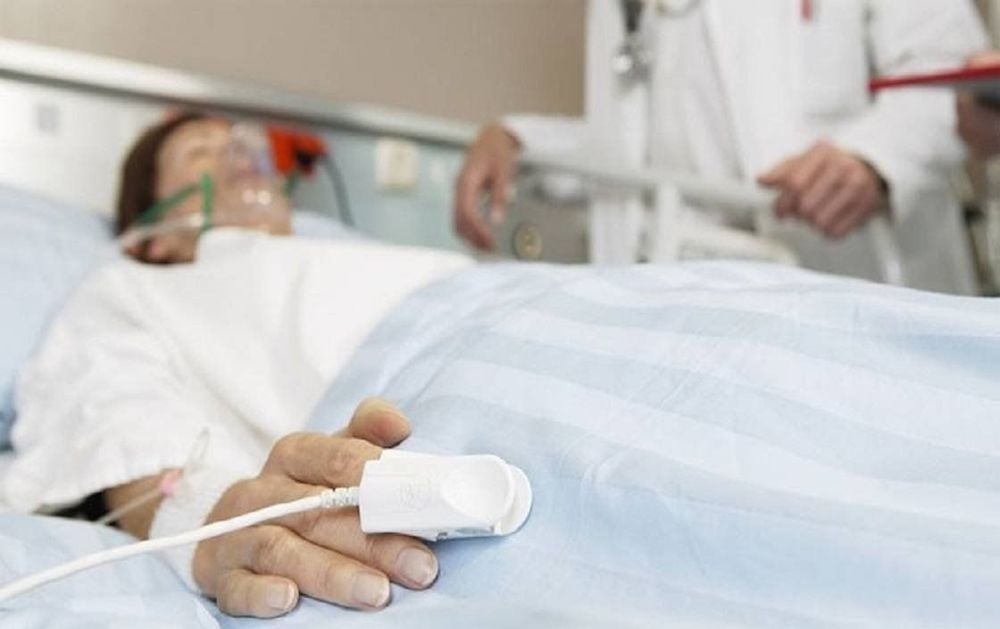
3. Side Effects of Tramadol + Paracetamol
Patients should inform their doctor if they experience common side effects, which may include: diarrhea, constipation, drowsiness, headache, dizziness, loss of appetite, nausea, sweating, fatigue, difficulty sleeping, vomiting…
Immediate medical attention is required if the patient experiences serious side effects, such as: chest pain, excessive sweating, difficulty with bowel movements, severe allergic reactions (including itching, difficulty breathing, rash, chest tightness, hoarseness, wheezing, swelling of the mouth, lips, tongue, or throat), confusion, dizziness or fainting, fever, hallucinations, rapid or irregular heartbeat, seizures, anxiety or sadness, blisters, severe vomiting or diarrhea, shallow and slow breathing, severe or persistent headache, suicidal thoughts, vision changes, pale skin, shivering or weakness, liver problems (such as jaundice, yellowing of the skin or eyes, abdominal pain, loss of appetite, dark urine).
4. Precautions When Using Tramadol and Paracetamol
Before using the medication, the patient should discuss potential benefits and risks with their doctor. Special attention is needed in the following cases:
- Allergies: Inform your doctor of any past allergic reactions to this medication, other drugs, or food, preservatives, or animal products.
- Children: The safety and efficacy of this medication have not been established in children.
- Elderly Patients: There is insufficient research on how this medication affects elderly patients, particularly those with heart, liver, or kidney issues. Dosing may need to be adjusted.
- Pregnant or Nursing Women: There are no adequate studies to confirm the safety of this medication in pregnant or lactating women. Consultation with a doctor is recommended before use.
- Other Health Conditions: Patients with a history of alcoholism, respiratory issues, depression, drug dependence (especially narcotics), neurological diseases, brain tumors, head trauma, elevated intracranial pressure, kidney or liver problems, a history of epilepsy, or gastrointestinal issues should exercise caution…
5. Drug Interactions with Tramadol + Paracetamol
Drug interactions can affect the drug's efficacy and increase side effects. Patients must inform their doctor about all medications they are taking and should never change dosages or stop medications without medical advice.
Do not use Tramadol and Paracetamol with the following: Naltrexone, Rasagiline, Selegiline. If these drugs are necessary, your doctor may recommend an alternative treatment plan.
Additionally, avoid the combination of Tramadol and Paracetamol with certain antidepressants, MAOIs, antipsychotics, sedatives, other opioids, and medications that lower the seizure threshold. In cases where it is necessary to use these medications, your doctor may suggest adjustments in dosage or frequency.
The risk of side effects may increase if Tramadol and Paracetamol are used with: Acenocoumarol, Digoxin, Carbamazepine, Fosphenytoin, Perampanel, Lixisenatide, Phenytoin, Warfarin, Quinidine, Zidovudine. In cases where it is necessary to use these medications, your doctor may suggest adjustments in dosage or frequency.
Consult your doctor regarding the use of food, alcohol, or tobacco while taking Tramadol and Paracetamol. During treatment, patients should avoid eating cabbage. Alcohol can enhance the sedative effects of the medication, which could impair the ability to operate vehicles or machinery; therefore, it is advised to avoid alcoholic beverages while using this medication.
Tramadol and Paracetamol are intended for the relief of acute and severe pain. Always consult a doctor before use, and avoid self-medicating or altering the dosage to minimize the risk of adverse effects.
To arrange an appointment, please call HOTLINE or make your reservation directly HERE. You may also download the MyVinmec app to schedule appointments faster and manage your reservations more conveniently.

